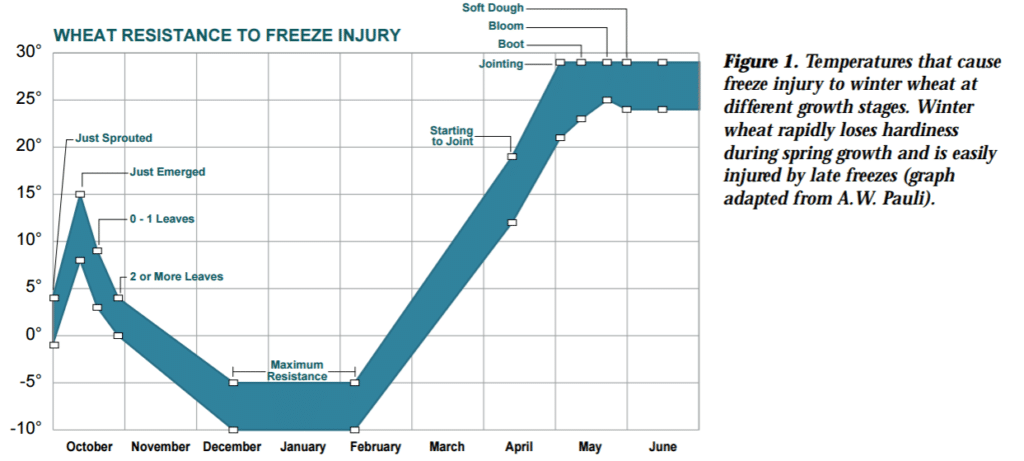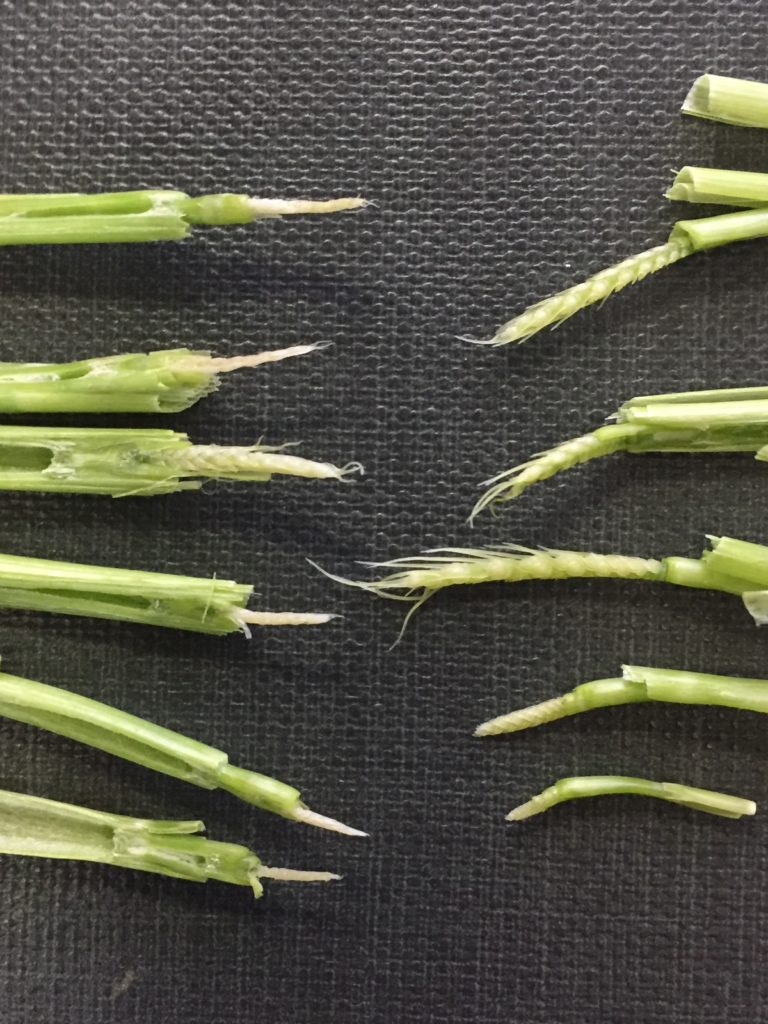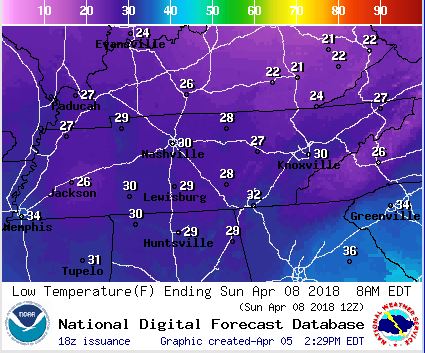Our wheat crop has matured rapidly in the relatively warm weather. Several of the fields I walk are past Feekes 8 and are quickly approaching Feekes 9. This puts us several weeks past jointing. With the head roughly 12 or more inches above the ground at those growth stages, concerns about the temperatures forecast for the weekend have been raised.
I’ve attached a graph from a Kansas State publication entitled, ‘Spring Freeze Injury to Kansas Wheat‘. The attached graph describes temperatures at which injury can be expected. Unfortunately, much of our wheat is well past the jointing phase and our tolerance is currently much closer to 28 degrees. Again, keep in mind that length of time the plant falls below freezing can also impact injury. The graph was constructed assuming two hours of exposure to the low temperatures. Temperatures warmer than graphed can cause injury if the length of time the plant is exposed to low temperatures exceeds two hours. Unfortunately, the forecast for Tuesday and Wednesday nights are much lower than our estimated tolerance levels (26 degrees for Jackson, see NOAA forecast image below).
Injury at our current growth stages can cause leaf burning, stem splitting, bending, and death of growing points. Although leaf damage may appear severe, the worst damage will be associated with injury to the growing point. In order to determine level of damage, you typically must wait several days after the cold temperature event. Slice the stem vertically to expose the developing head. An uninjured growing point will appear similar to the ones on the right in the below figure; healthy growing points are yellow-green in color and appear turgid. Damaged heads (left side of image) will lack turgid cells around the outside of the growing point and will appear water-soaked. Injury will be worse in tillers that are most mature. If your wheat is more mature, you may see sterility and/or head emergence issues. 
Review the Kansas State publication for additional information. Hopefully, injury will be localized in lower areas of fields and only a few tillers per plant will be impacted. Fortunately, several areas are not forecast to drop very far below freezing as of this afternoon (4/5- NOAA forecast low temperature pictured below). I will update the blog with information on observed injury and management as necessary.

